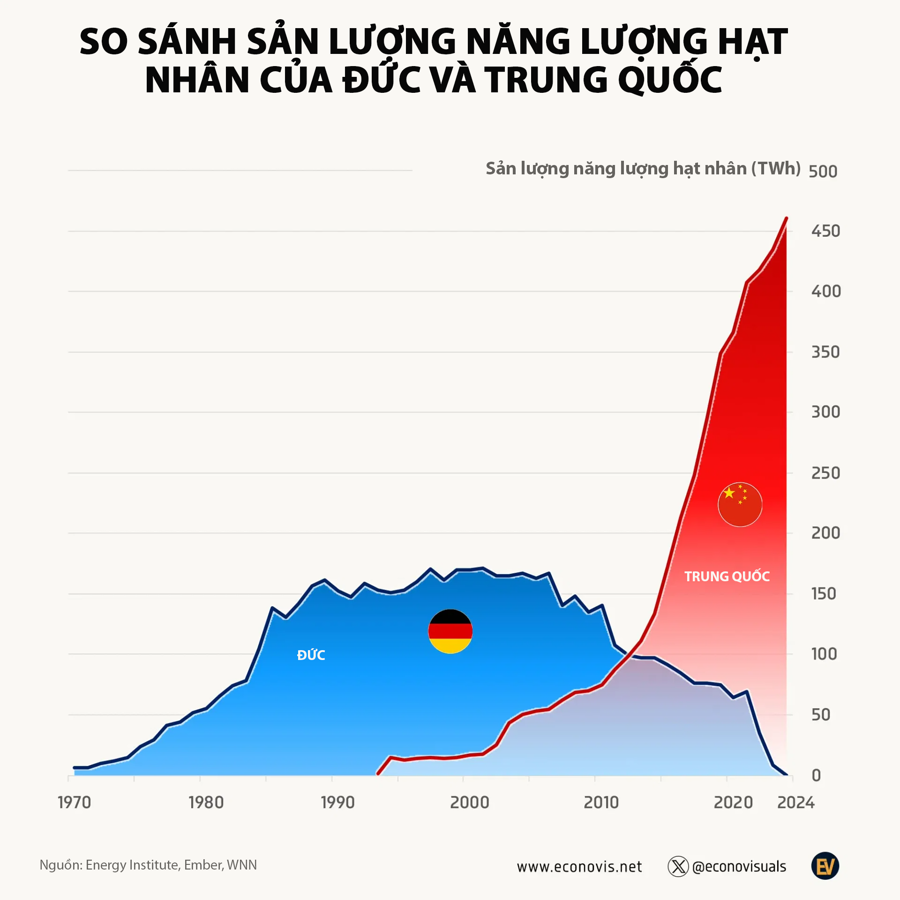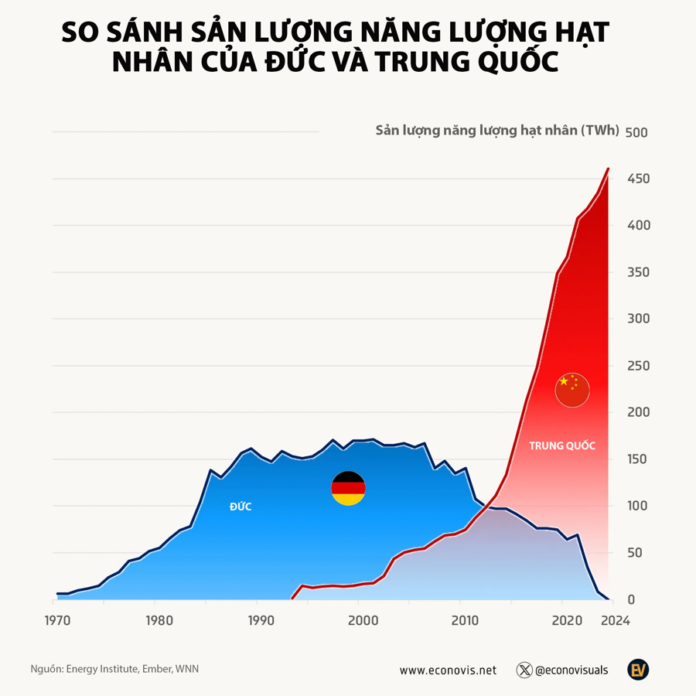**The Nuclear Energy Conundrum: A Tale of Two Economic Powerhouses**
Nuclear energy is widely regarded as a clean and stable source of energy. As the world’s economies strive for sustainable energy usage, many countries are ramping up their investment in nuclear power infrastructure or revisiting this option after years of reduced investment.
However, a notable exception to this trend is Germany, which has set itself the goal of completely phasing out nuclear energy production. In stark contrast, China is experiencing a “nuclear energy fever.”
The infographic below highlights the contrasting nuclear energy trajectories of these two economic powerhouses, the largest economies in Asia and Europe, respectively.

From 2006 to 2023, China’s nuclear energy production witnessed a staggering 690% increase, surging from 55 terawatt-hours (TWh) to 435 TWh. Last August, Beijing approved 11 new nuclear reactor construction projects across five provinces, with an estimated total investment of $31 billion. These projects are expected to be completed within five years, aligning with China’s strategic plan to boost its nuclear energy sector.
During the same period, Germany’s nuclear energy production declined to zero, making it the only major economy to completely abandon nuclear power. Germany shut down its last nuclear power plants in 2023, and 2024 will mark the first year since 1962 that the country will be nuclear-power-free.
Excluding Germany, global nuclear energy production grew by 3.2% during this time. The United States maintained a steady output, while Russia, a prominent fossil fuel producer, saw a 39% increase in nuclear energy production, mirroring China’s trajectory.
The Congress Proposes a Resolution to Invest in an $8.3 Billion Railway Project
At an extraordinary session on February 13, the National Assembly discussed the proposal and assessment report on the investment policy for the Lao Cai – Hanoi – Hai Phong railway project, with a proposed investment mode of public investment. The preliminary total investment is estimated at VND 203,231 billion (approximately USD 8,369 million).
The Neighboring Country of Vietnam Strikes Gold Again: A Super-Massive Treasure Trove of Hundreds of Tons of Gold Discovered, Potentially Shaking Up the Global Gold Market
A glittering discovery has been made in China, with the unearthing of a new gold mine estimated to hold over 168 tons of the precious metal.




















